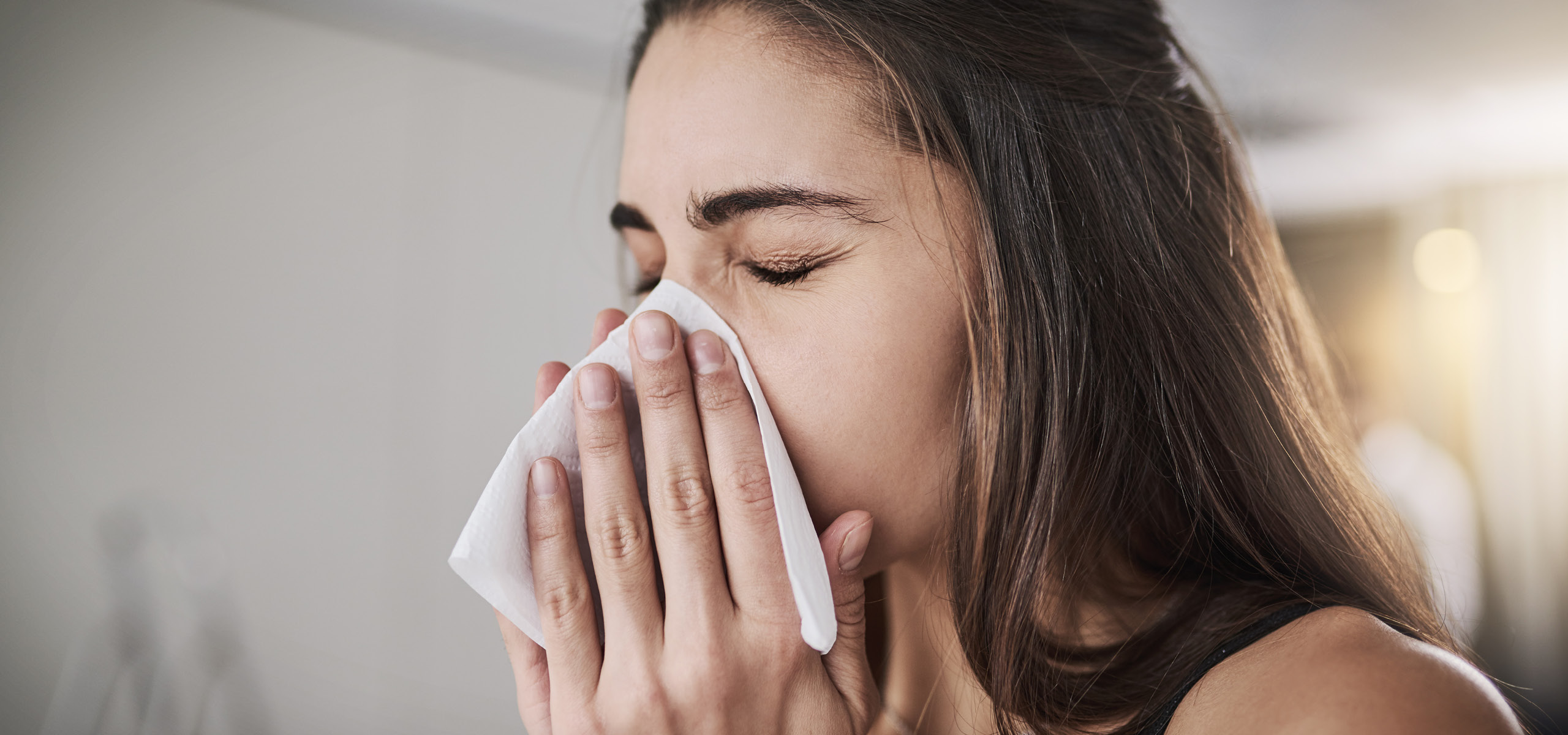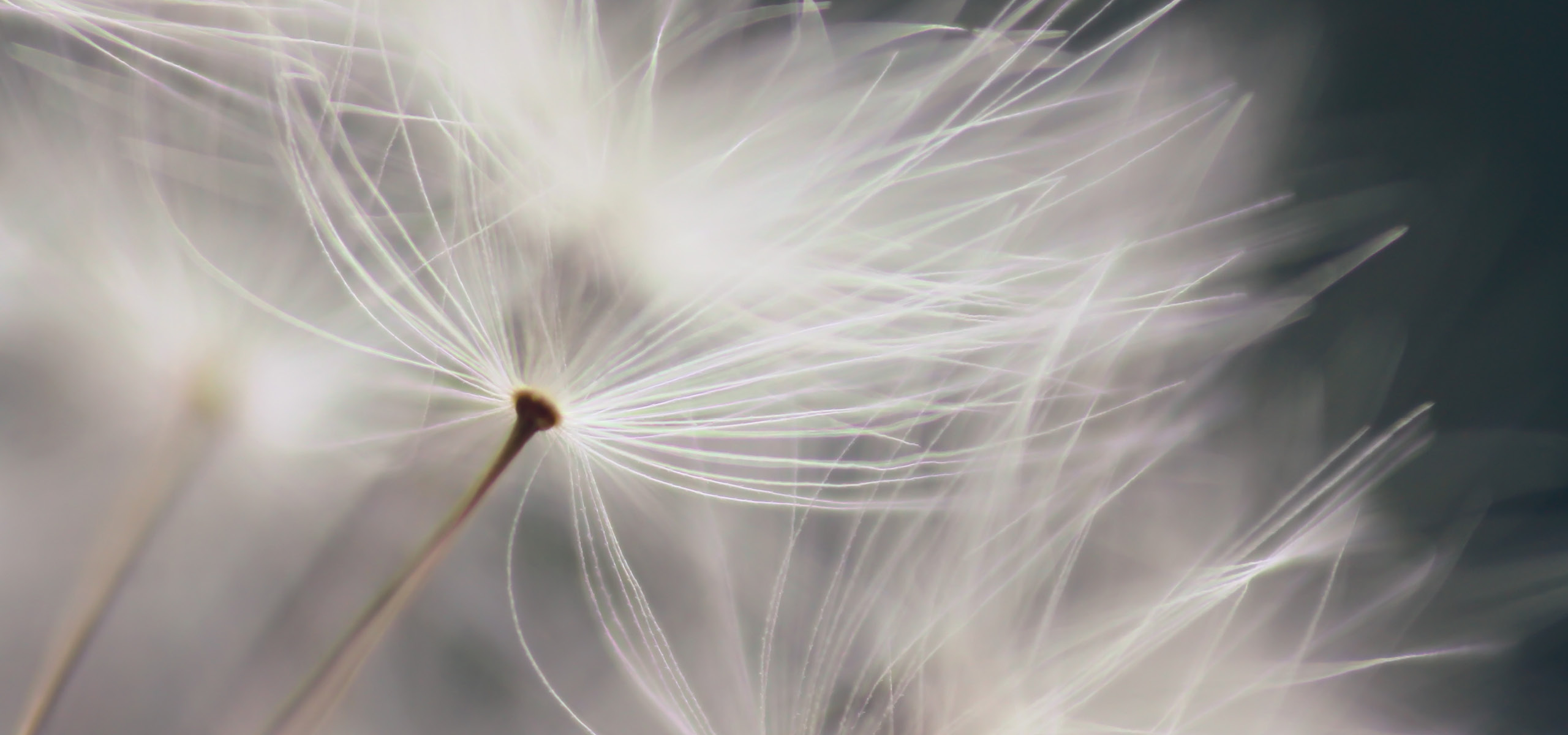Hayfever and sinusitis
Hayfever and sinusitis can cause unwelcome symptoms that can impact your quality of life. Read on to learn about a more natural approach to easing them.

What are the symptoms of hayfever?
Hayfever is a type of allergy that affects the mucous membranes of the upper respiratory tract. Its symptoms may include:
- A runny, itchy or stuffed up nose
- Red and itchy eyes1
Depending on the nature of the allergic reaction involved, hayfever can occur throughout the year (perennial rhinitis), or only at times when pollens and other allergens are widely released into the atmosphere (seasonal rhinitis), in which case it’s most common in spring and summer and on days that are windy and dry.2
What are the symptoms of sinusitis?
Sinusitis is a term used to describe inflammation or blockage of the cavities or passages in the bones of the skull, including those in the nose, cheeks and forehead and around the eye sockets.3
The inflamed tissues swell, secreting mucus in greater than usual quantities and with a thicker than usual consistency, clogging the sinus passages and making it difficult to breathe through your nose.3
Unlike the clear watery secretions associated with hayfever, the mucus produced by sinusitis tends to have a denser consistency.
The associated congestion can cause sinus pain, a runny nose and/or post-nasal drip (where mucus travels from the sinuses into the throat).3

What causes hayfever?
Hayfever is an allergic condition that’s usually triggered by inhalation of an airborne allergen such as pollen, grass, mould, dust mites or pet dander (skin cells).1
When the allergen is encountered, the immune system responds by forming antibodies to it which initiate the release of histamine. This in turn prompts inflammation in the local area including redness and itchiness of the eyes to develop and the watery discharges that are secreted from the nose, sometimes leading to a blocked nose.1
Other types allergies can affect the skin, resulting in inflammation and conditions such as eczema.4
Herbal therapies for hayfever and sinusitis
Baical skullcap: traditionally used to ease hayfever symptoms in Chinese medicine
Baical skullcap is highly regarded in traditional Chinese medicine (TCM) for its traditional uses for the relief of mild allergy symptoms including easing hayfever symptoms such as red and itchy eyes, plus a runny, itchy and blocked nose.
Baical skullcap is also traditionally used for its anti-inflammatory properties including soothing inflamed skin and symptoms of mild eczema in Chinese medicine.
Find baical skullcap alongside six other Chinese herbs in Fusion Allergy - ginger, pinellia, Korean ginseng, Chinese licorice, ziziphus and bupleurum.
Xanthium: traditionally taken to ease sinus pain and post-nasal drip in Chinese medicine
Fusion Sinusitis is a combination of herbs specifically designed around a TCM herbal formula called Cang Er Zi San, which has been traditionally used for several hundred years to relieve sinusitis symptoms. The herb xanthium the ‘Emperor’ or ‘leading’ herb in formula because it’s traditionally taken to relieve sinusitis symptoms including sinus pain, nasal congestion and a runny nose in Chinese medicine.
Xanthium is also traditionally used in TCM to reduce excess mucus and ease post-nasal drip as well as symptoms of hayfever.

Diet and lifestyle recommendations for hayfever and sinusitis
- Where possible, protect yourself from airborne allergens and the negative effects of excess Wind (believe to contribute to allergies and respiratory issues in TCM) by staying indoors on blustery days. If you must go out, dress warmly and try to stay out of the wind
- Acupressure may help to relieve the pain and congestion of hayfever and sinusitis. Using your index or middle finger, apply firm pressure to your cheek at outside edge of your nostril for about a second, and then move upwards and do the same alongside the bridge of your nose and at the top inner corner of your eye socket. Next, massage your forehead and temples vigorously, and then repeat the cycle several times
- Minimise your exposure to pet dander and dust mites by keeping your home very clean, and wear a protective mask if your occupation exposes you to dust or other airborne irritants at work
- Eating plenty of pungent and spicy foods may help to liquefy and drain mucus; good options include wasabi, horseradish, garlic, onions, radishes and leeks
- At the same time, steer clear of dairy products, which are a common dietary allergen and may promote the production of mucus
- Avoid cigarette smoke, including secondhand smoke; it irritates the respiratory mucous membranes
Always read the label and follow the directions for use.
References
- Victoria State Government. Last updated April 2017 and accessed February 2021 from betterhealth.vic.gov.au/health/ConditionsAndTreatments/allergies
- Asthma Australia. Last updated September 2020 and accessed February 2021 from https://asthma.org.au/about-asthma/triggers/hay-fever/
- Australasian Society of Clinical Immunology and Allergy. Last updated May 2019 and accessed February 2021 from https://www.allergy.org.au/patients/allergic-rhinitis-hay-fever-and-sinusitis/sinusitis-and-allergy
- John Hopkins Medicine. Accessed September 2020 from hopkinsmedicine.org/health/wellness-and-prevention/rashes-and-skin-inflammation
















